The parish of Furnas, constituted as a parish in 1791 and currently with 1 439 inhabitants, is one of the most beautiful places of the archipelago, commonly known as the "Guest Room of the Azores". The toponym is related to several active secondary volcanism manifestations found in Furnas Valley, such as boilers or fumaroles and hot springs.
However, some people say that the greatest wealth of the Furnas Valley is the diversity of its waters and springs, being considered by experts as the biggest hydropolis of the World.
In this idyllic paradise, one can also contemplate the Furnas Lake with its green benches, the church of Nossa Senhora das Vitórias on one of the margins and, opposite, the area where the famous “Cozido das Furnas” is cooked – in the natural boiling waters of Furnas.
Moreover, Furnas is also known for its various magnificent parks and gardens, among which: José Canto, Dona Beatriz, Fonte Bela (owned by the family M. Perrina), António Borges (owned by the family Gomes da Câmara) and Forestry Services Park. One however deserves special highlight: Terra Nostra Park , where one will find a wide variety of shrubs and trees, some over 200 years old, as well as wide a pool/lake of natural ferruginous hot water, dominated by the grand main house of the Park, former summer residence of its founder, Thomas Hickling.
What to see in this parish:
* Church of Sant´Ana (Old Church)
Chapel built in the 18th century by Father Cosme Pimentel. It was expanded in 1791, becoming the parish church of Furnas. Above the church window, a decorative element is inscribed with the date 1791 and a decorative relief with "SANTA/ANNA/D.FURNA ".
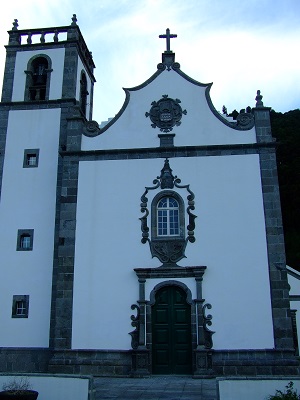
* Church of Nossa Senhora da Alegria
Church inaugurated on 22 November, 1963, over 60 years after the first stone was placed, in 1901. The invocation of this patron is a tribute to the Jesuits who settled on the 17th and 18th century and built a temple/chapel dedicated to Nossa Senhora da Alegria, near Ribeira da Alegria, before 1642.
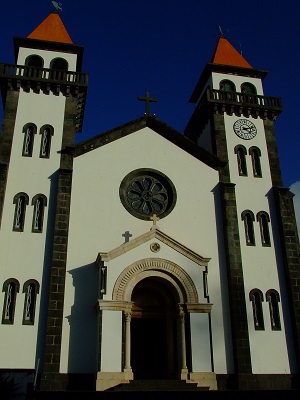
* Chapel of Nossa Senhora das Vitórias
Private chapel situated on the southern bank of the Furnas Lake, opened in 1886. It was built with the purpose of burying the couple José do Canto and Maria Guilhermina do Canto. It is one of the rare examples of neo-gothic style in Portugal, unique in the region. The construction began in 1877, although the plan had already been drawn in 1864. It presents thirteen windows with beautiful stained glass windows representing biblical scenes. The building is classified as Public Interest since 2001.
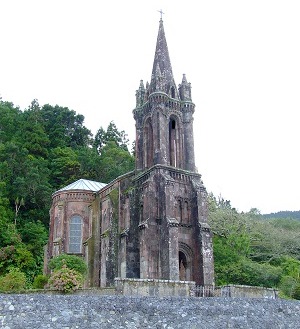
* Triato of the Holy Spirit
“Triatos of the Holy Spirit” are constructions associated with the festivities in honor of the Holy Spirit, intended to display the symbols of the Holy Spirit, including the royal crown surmounted by a dove, flag, scepter, traditional masts. They are built in a rectangular one floor plan. There are two triatos in Furnas:
1. Located in Largo do Teatro, next to Church of Alegria with windows and arched doors.
2. Located on Rua da Igreja, opposite of the Church of Santana.
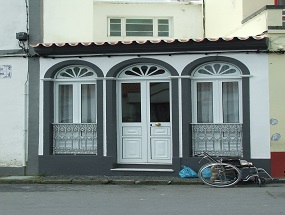
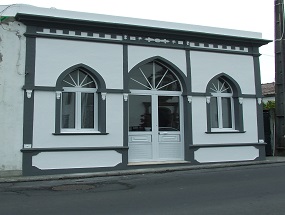
* Fountains
The fountains played a very important role in people's daily life. In a not too distant past, there were no sources of tap water to supply several localities. In the parish of Furnas, there are 20 fountains:
1. Located on Rua do Arrebentão das Pimentas. The central part of the fountain is decorated with blue and white tiles and the side, ornated with basaltic rock. Part of the structure of this fountain recessed two side seats.
2. Located on Rua do Parque, it is decorated with blue and white regional tiles depicting past scenes of people coming to the sinks to wash clothes. The spout feeds an old sink recovered in 2003. It always has running water.
3. Located in Largo of the Clinical Post. The population of the entire island resorts to this fountain to collect water. The front bears the inscriptions "05/10/1986 ". The name Gloria Patri is inscribed in blue and white regional tiled.
4. Located in Largo da Estrela, in the public garden of Avenida Pereira Atayde. The central part of the fountain is decorated with blue and white tiles, the side is ornated with basaltic rock. Part of the structure of this fountain recessed two side seats.
5. Located in Largo of Três Bicas, it has running mineral water. The basalt frame bear the inscriptions "pelo POVO, 1849" and "pela Junta Geral, 1905".
6. Located on Rua dos Moinhos, carved entirely in basalt.
7. Located on Rua de Santana, near the Church of Santa'Ana, carved entirely in basalt.
8. Located in Chã da Ribeira. Behind this fountain runs a stream, where people would come to wash clothes in the past.Today we can still see where the clothes were washed. The central part of the fountain is decorated with blue and white tiles and the side is ornate with basaltic rock. Part of the structure of this fountain recessed two side seats.
9. Located in Caminho Novo. The structure is carved entirely in basalt rock. The front is inscribed with "1910".
10. Located near the ironclad baths. Fountain which pours mineral water from Dr. Bruno. Structure made of stone tillage (basalt).
11. Located on Rua da Igreja, inside the church garden. Ornamented with blue and white tiles, it presents a basin in basaltic rock.
12. Located inside the Playground Nursery Furnas Forest Reserve. The front is inscribed with "1889" and "OP". It has a tiled roof and basin basalt.
13. Located on Praça Multiusos. It is decorated with blue and white regional tiles depicting a scene of rural everyday life. It was built in 2006.
14. Located on Rua da Água Quente, near the entrance to the hot spring pools of Dona Beija. The central part of the fountain is decorated with blue and white tiles and the side is ornate with basaltic rock. The structure also presents two side benches.
15. Located on Rua da Palha,it is decorated with blue and white tiles and carved in basaltic rock.
16. Located on Rua Formosa.
17. Located on Rua do Além.
18. Located on Rua Formosa, built in basaltic rock.
19. Located on the Regional Road, between Povoação and Furnas. It always has running water.
20. Located in Canada do Ferreiro. Built in honor of São Joao, in basaltic rock, the frame is decorated with blue and white regional tiles.
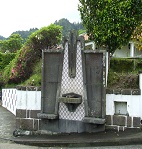
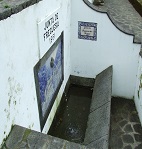
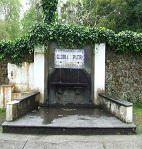
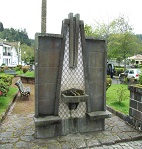
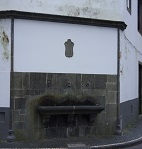
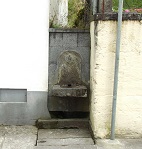
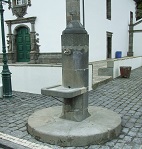
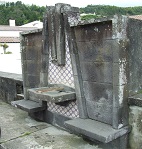
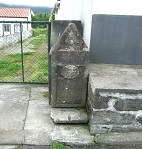
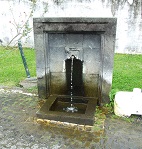
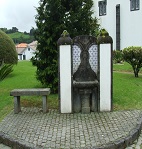
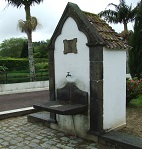
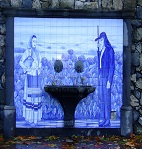
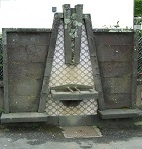
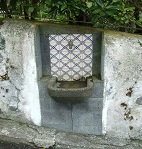
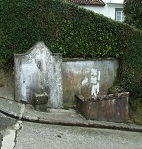
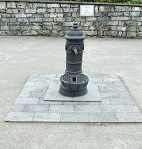
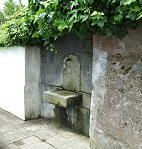
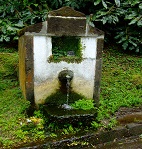
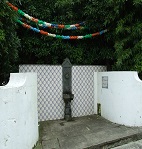
* Bandstand
The bandstand is used to shelter music bands during concerts, festivals and other events. It is a symbol of celebration and remains, to this day, an important stage for performances to many communities. Located inside the garden of the Church, it has a tiled roof and stair access.
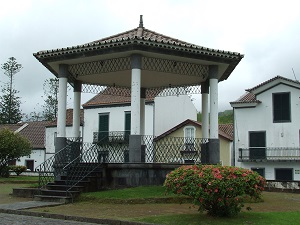
* Old sinks
The sinks or washing tanks are vestiges of the past. When the urbanization intensified, cities built public sinks for people without great possessions, so that they didn’t had to walk to the streams. Located in Rua da Água Quente, it is currently out of use.
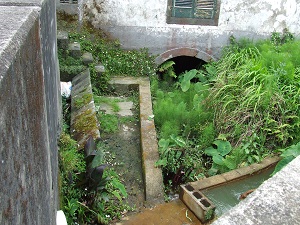
* Charcoal burners
The charcoal burners located on the southern bank of Furnas Lake were built in stone masonry plastered with cylindrical base of about 3 feet in diameter and covered by a dome of about three feet tall. Currently, only two of the 17 structures built in the 20th century remain intact.
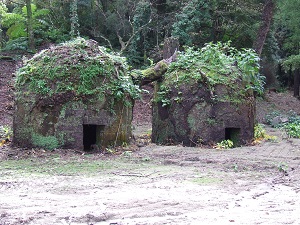
* House of Murtas - Classified as Building of Municipal Interest
The Park and House of Murtas, both located in the parish of Furnas, are classified as Property of Municipal Interest by the Resolution No. 144/1997 of 31 July. Although it was known as “Murtas Park” until the mid-19th century, today it is known as Garden of Dona Beatriz do Canto. It is located along Ribeira das Murtas, river that runs through the parish of Furnas.
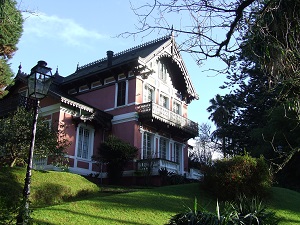
* House of Grená
Located on the eastern bank of the lake and flanked by Pico do Ferro. This property dates back to 1838 and despite being in poor condition, offers a great view of the Lake of Furnas. It is owned by the state and was once an ensemble of buildings located in an area of woods, pastures, beautiful gardens and orchards. It received several names through the years, among which "Gitana".
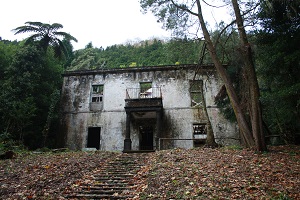
* Viewpoint of Pico do Ferro
Located on the top of the Pico do Ferro, at 570m above sea level, it offers a fabulous view of the caldera of Furnas and of the surrounding mountainous area.
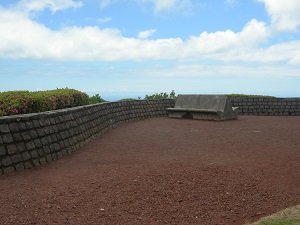
* Viewpoint of Pedras do Galego
This viewpoint is located on the Regional Road and offers a view over the village of Furnas, as well as most of Furnas Valley, including part of the Lake of Furnas.
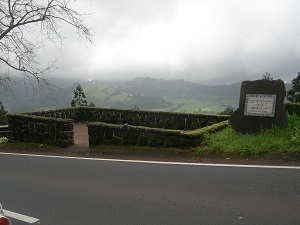
* Viewpoint of Lombo dos Milhos
Located in Lagoa Seca, inaugurated by the parish of Furnas in 1996. It offers a panoramic view of the green hills surrounding the volcanic complex. It is also a picnic area.
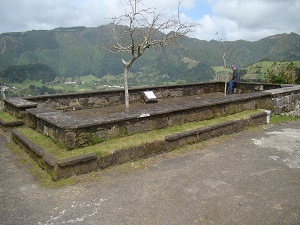
*Viewpoint of Lagoa das Furnas
Situated on the Regional Road, it offers a view of the Lake of Furnas.
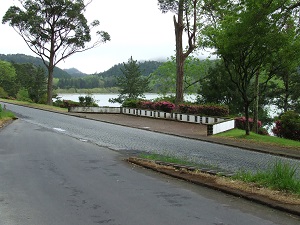
* Terra Nostra Park
With over two centuries and an area of 12.5ha, Parque Terra Nostra is the jewel in the crown of Furnas Valley. It hosts a unique plant and landscape heritage, accumulated through various interventions and improvements started in the late 18th century and continuing to the present day. The pool of thermal water is the main attraction, but other sites are worth the visit, such as the Cycas place, the Endemic Garden, the Garden of Flowers, the Camellia Garden and the Garden of Ferns, the Avenue of the Palms and Avenue of Ginkgos. There is also in memory of the Viscondes da Praia, an obelisk at the top of Avenida das Palmas. The imposing dwelling was the summer residence of Thomas Hickling and presents notably a beautiful staircase facing the thermal baths.
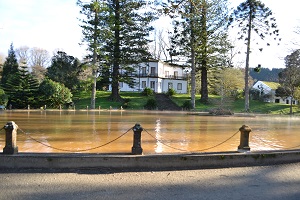
* Public Garden of D. Beatriz do Canto
Romantic park, dating from 1860, located on Rua de Santana, originally known as Parque das Murtas. With an area of 3.7ha, the park consists of spacious lawns, wide paths and dense wooded spots around a lake that holds the waters of Ribeira das Murtas through a weir. The botanical garden heritage is distinguished by the presence of a number of trees of remarkable dimension, such as Sequoias. On the lakeside, stands the house of Ernesto Canto, built in 1866 by a French architect, A. Huge. This park is open to the public during the month of August.
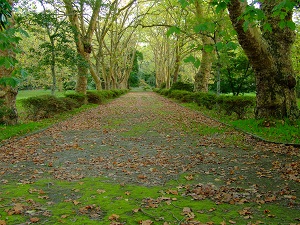
* Forest Garden José do Canto
Created by José do Canto, it is the largest property of the Lake of Furnas, inscribed in the "Portuguese Association of Historic Garden Sites”, occupying the southern bank of the lake and penetrating into the mountain, to the extent of Ribeira do Salto do Rosal. All the property is heavily forested with large areas reserved for forest production and forest protection and another installment in the lowlands, near the border, where beautiful garden kills, designed and planted in the 19th mid –century, grow. Among the diversity of species found in the Forest - Garden stand out: Quercus robur, Fagus sylvatica, Sequoia sempervirens and Chamaecyparis lawsonitana.
For more information | Clike here
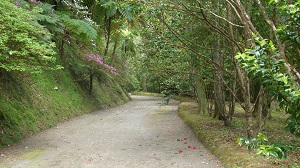
* Furnas Lake Villas - Old Farm of Nossa Senhora da Oliveira
ILocated at Lagoa Seca, more precisely in the floor area of Chã do Chão. It is a tourist resort inserted in a large area of great botanical variety dating back to the 19th-21th century. It is crisscrossed by forest paths and some ancient trails that connect otherwise inaccessible points in the middle of the mountains. In the low and flat terrain are ten modern bungalows that integrate tourism activities.
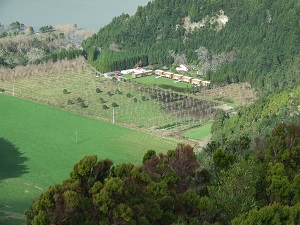
* Public Garden of Quenturas or Public Garden of Banhos Novos
Popularly known as Banhos Novos or Quenturas, this landscaping project was ordered by the General Board of the District in the 1940s. The plant species are all exotic. Among the most notable arboreal specimens are several American Oaks, Tulip trees, Caribbean Royal Palms, Canary Island Date Palms, Australian Tree Ferns and a rare set of Sequoias. The area surrounding Banhos Novos is known for its carbonated thermal springs and mineral waters.
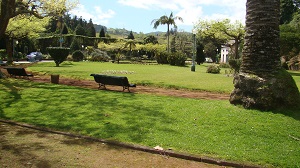
* Public Garden of Largo da Estrela
Located on Avenida Pereira Atayde, it is modest garden with a large Palm tree in the center, raised lawns and benches. It is flanked by plane trees and features a fountain.
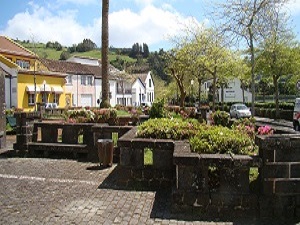
* Public Garden of Rua das Caldeiras
Small lawned garden with some trees to provide shade.
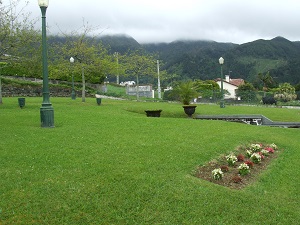
* Public Garden of Courela
Located in the boiler area, with lawns and footpaths. It offers trees and shrubs that provide shade.
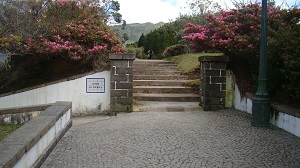
* Public Park of Alameda
Garden with grass floor, dated 2009, located on Avenida Dr. Manuel Arriaga.
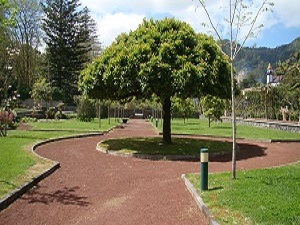
* Nursery Forest Reserve Playground of Furnas
Forest Reserve of 4.5ha that houses endemic species, oaks, chestnut trees and other hardwoods, as well as a large production of Cryptomeria japonica, tree species strongly present in the Azorean landscape. Regarding aquaculture, a post is dedicated the production of Rainbow trout, intended for rehabilitation of permanent water courses in São Miguel and of Lagoa do Fogo. The post also displays a permanent exhibition on exotic animal species.
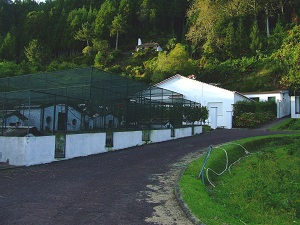
* Picnic Park of Tambores
Located on the Regional Road, in Tambores, along the stream of Tambores. This pleasant park also offers restrooms, barns, tables and stone benches.
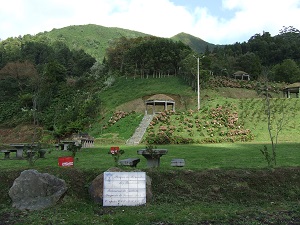
* Picnic Park of Avenida Pereira de Atayde
Picnic area with large trees, located on Avenida Pereira de Atayde, equipped with stone benches and tables.
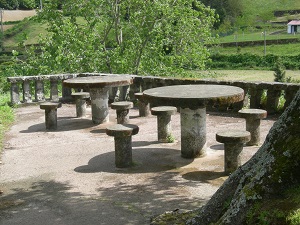
* Picnic Park of Viewpoint of Lombo dos Milhos
Next to the viewpoint of Lombo dos Milhos, this lawned and flowery park offers an area with barns, tables and benches for picnics.
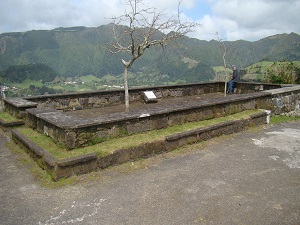
* Picnic Park from Estrada da Lagoa da Furnas (Zone of Boilers)
Located on the roadside of the northern bank of the Lake of Furnas and equipped with tables and benches in stone.
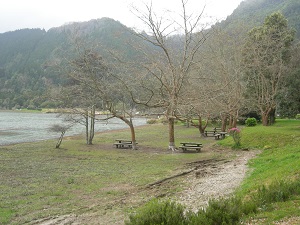
* Picnic Park of Pinhal da Lagoa das Furnas (Zone of Boilers)
Situated in the middle of a pine forest, next to the fumarolic field on the northern bank of the Lake of Furnas, equipped with tables and benches in stone.
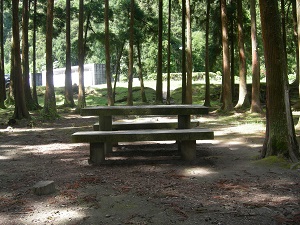
* Picnic of Lagoa das Furnas (Zone of Boilers)
Leisure area with large trees offering shade, tables and benches in stone, located along the northern bank of the Lake of Furnas, near Ribeira do Salto da Inglesa.
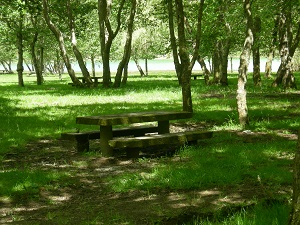
* Picnic Park of Chã dos Pinhos (Lagoa das Furnas - South Zone)
Picnic area situated on the southern bank of the Lake of Furnas, equipped with restrooms, tables and benches in stone.
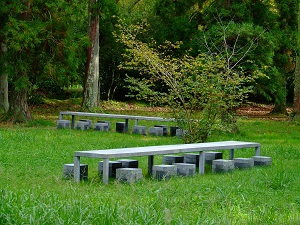
* Camping Park of Furnas
The camping park of Furnas has a capacity of 100 wells and is equipped with four restroom blocks, a total of 36 restrooms, 32 showers and 48 sinks. Adjacent, there are areas for washing and drying clothes, ironing boards and sinks for dishwashing. The site is also equipped with six grills, running water, lighting and tables, restaurant and bar with terrace, a playground and even a room for games, such as football, volleyball, tennis, among others.
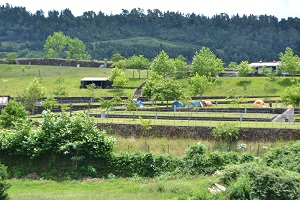
* Golf course of Achada das Furnas
The golf course is located in Achada das Furnas (Planalto above Furnas Valley), and has two nine-hole courses with par 72 and 6 232m. The first 9-hole course was originally built between 1936 and 1939 according to a project by MacKenzie Ross. Later, it was transformed into a 18-hole course by Cameron & Powell. It has all the characteristics of a Scottish field, the most British countryside of Portugal. It also has a clubhouse with restaurant and bar, lounge, golf shop and changing service.
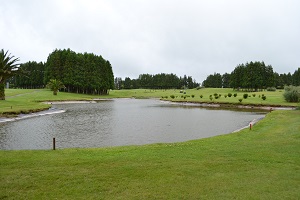
* Crafts Shop - Cooperativa Celeiro da Terra
Wide range of regional crafts. This co-op is dedicated to the confection of biscuits, liquors, jams, embroidery and lace. Those products are complemented with markets articles of wood and stone tillage manufactured by associates.
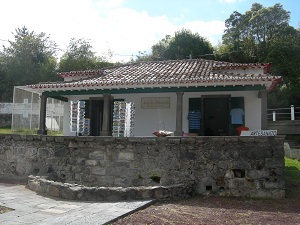
* Microbial Observatory of Azores (OMIC - Observatório Microbiano dos Açores)
Opened on 26 July, 2010 and incorporated in the Azores network of Science Centers, OMIC is a natural laboratory that aims to play a leading role in the investigation of microbial ecology as well as ensuring the preservation of the important biodiversity existing in the thermal springs of Furnas.
Housed in Chalé das Misturas, the observatory is open to the public for temporary exhibitions that allow visitors to learn more about the area and thermal microbial communities, in addition to guided tours and safaris to carpets of microorganisms of the boilers Furnas.
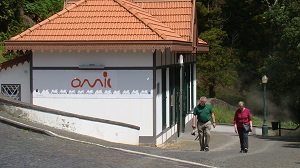
* Monitoring and Research Centre of Furnas (CMIF) - (Centro de Monitorização e Investigação das Furnas)
Furnas Research and Monitoring Center (CMIF) integrates a broad transversal intervention, articulating in one single project the programs and actions of the Regulation Plan for the Drainage Basin of Lagoa das Furnas, notably the rehabilitation of its margins. Opened on July 1, 2011, CMIF functions as an observatory and integrated center for knowledge dissemination, playing an important role in the translation of scientific information to a language able to captivate visitors into better understanding nature, as well as in recreational and ecological rehabilitation activities, all in a landscape that is constantly changing. The centre covers a research, monitoring and project development area, complemented by a working space, smaller support offices and monitoring laboratories conceived to welcome our visitors. Among other facilities, an auditorium where workshops and seminars are conducted and a vast exhibition area that, thanks to interactive mechanisms, accessible tools, multimedia platforms and guided tours, leads our visitors into discovering the ecosystem of the lake and local fauna and flora. This main activities centre is completed by adjacent outdoor areas, including picnic and contemplation areas and a vast green space that offers a privileged view over the lake, ideal for landscape contemplation and leisure activities.
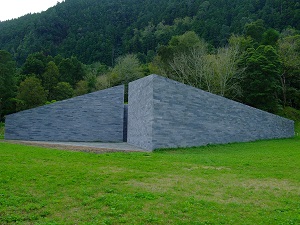
* Tourist information office from Furnas
The Tourist Information Office promotes Vila das Furnas and encourages tourism, located in the center of town, on Rua Doutor Frederico Moniz Pereira.
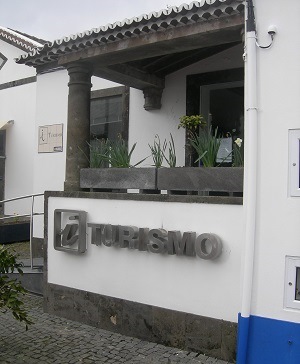
* Springs
The volcanic origin of the Azores explains the occurrence of several springs of mineral waters, predominantly carbonated and thermal, sprea throughout most of the archipelago. Precisely in São Miguel, in the municipality of Povoação, lies one of the largest hydrological centres of Europe - Vale das Furnas. Near the urban area, several carbonated mineral springs , as well as discharges of hyperthermal waters associated with fumaroles can be observed and larger fumarolic fields exists in all the parish. Along with the Lake of Furnas, the hot springs are one of the main symbols of Furnas, representing a biological, biotechnological and tourist interest.
Zona da Chã das Caldeiras:
** Água Azeda do Rebentão
Cold, acidified spring, with a temperature of 15.6°C, located in Chã das Caldeiras. According to folk medicine, this water cures dandruff and facilitates digestion.
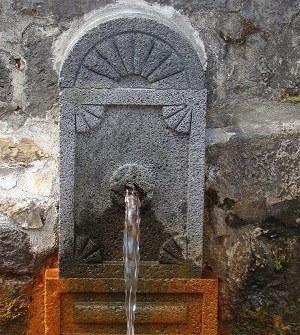
** Água Azeda
Located in Chã das Caldeiras, this source has a temperature of 15.9 °C and acidic pH.
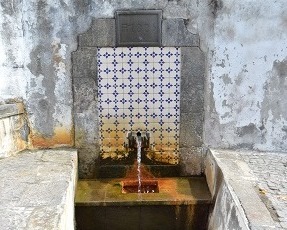
** Iron Water
Thermal spring with a temperature of 34.4°C and acidic pH. It is located in Chã das Caldeiras and used by the population for therapeutic purposes, particularly in the treatment of allergies. It is also known as "Water of the Beautiful Eye ".
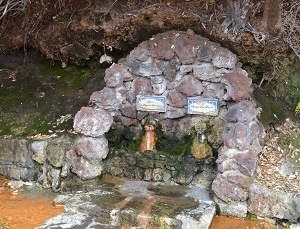
** Água do Rego
Spring with a temperature of 16.2°C and acidic pH, located in Chã das Caldeiras.
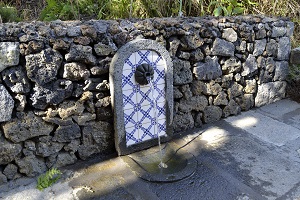
** Água Santa
Spring with a temperature of 95.5°C, highly basic pH, located in Chã das Caldeiras. According to folk medicine, this water mixed with honey, cinnamon and a bit of rum produces excellent syrup for colds, laryngitis and pharyngitis.
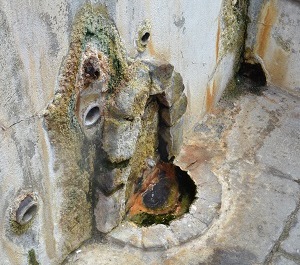
** Água do Caldeirão
Hot spring with a temperature of 75.1°C, slightly carbonated, located in Chã das Caldeiras. According to folk medicine, this water mixed with honey is effective in the treatment of coughs and colds, including pertussis.
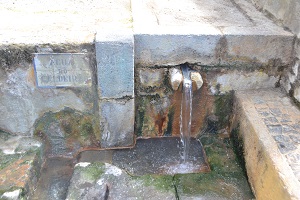
** Água Dr. Diniz
Cold spring with a temperature of 16.1 °C and acidic pH, located in Chã das Caldeiras.
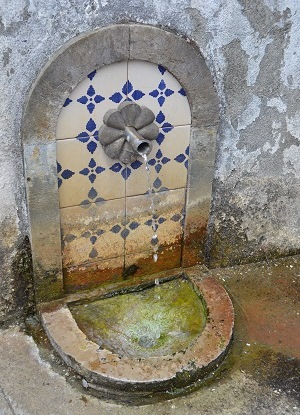
** Água Miguel Henriques
Cold spring with a temperature of 21.1°C and acidic pH, located in Chã das Caldeiras.
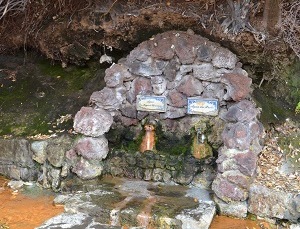
** Nascente da Ponte
Spring with a temperature of 95.80°C, located in Canada da Grota.
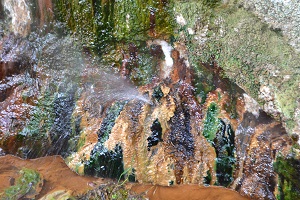
** Água do Padre José
Located in Chalé da Tia Mercês, with a temperature of 55.4°C. According to folk medicine, this water soothes and heals "surfs" and is also appropriate for treating cholesterol.
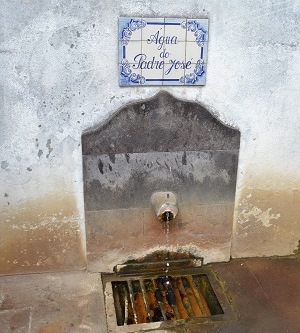
** Água Tio José de Sousa
Cold spring with a temperature of 16.0°C and acidic pH, located in Chã das Caldeiras.
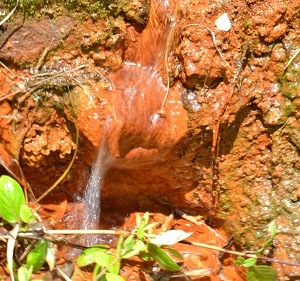
** Caldeira dos Vimes
Fumarole with a temperature of 70.0°C, acidified, located in Chã das Caldeiras.
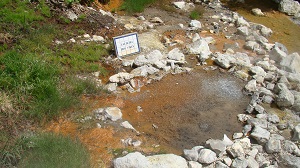
** Caldeira do Esguicho
Fumarole with a temperature of 98.0°C, basic pH, located in Chã das Caldeiras.
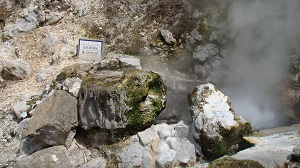
** Caldeira Pêro Botelho
It is the best known geyser of Furnas, associated to various myths and stories. Also known as the Hellmouth, it serves as a “barometer boiler” for the people of Furnas, since depending on the amount of rain or wind, the noise that emerges from this boiler ranges from mild beating of waves to actual thunder storm sounds. When the weather returns to normal, the sounds fade to the quiet murmur of sandy beach waves.
Women population of Furnas used to do in the boiler Pêro Botelho, barrelas.
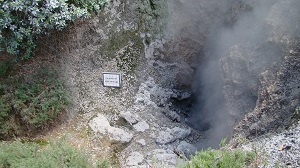
** Caldeira do Asmodeu
Fumarole with a temperature of 98.8 °C, neutral pH, located in Chã das Caldeiras.
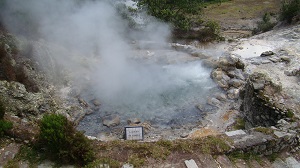
** Caldeira Grande
Fumarole with a temperature of 99.5 °C , basic pH, located in Chã das Caldeiras.
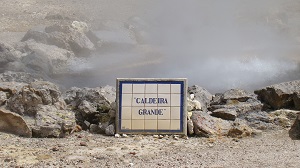
Zona das Quenturas ou dos Banhos Novos:
** Água do Torno
Located on Avenida Dr. Manuel de Arriaga, this spring has a temperature of 41.3 °C.
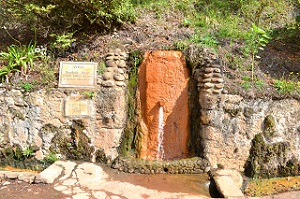
** Água da Poça
On Avenida Manuel Arriaga, this hot spring has a temperature of 40°C, and is used for the treatment of dermatoses. It is popularly known as the "Poça da Silvina".
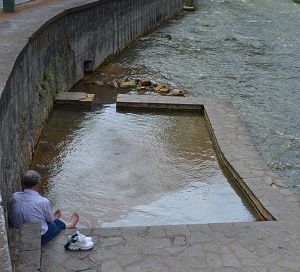
** Água Férrea
Located on Avenida Pereira Atayde, this spring has a temperature of 52.30°C and is highly acidified.
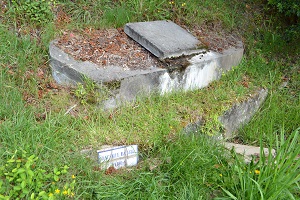
** Água da Morangueira
Hot spring with a temperature of 41.2 °C, slightly acidified, located on Avenida Dr. Manuel de Arriaga and indicated for the treatment of liver and kidney diseases.
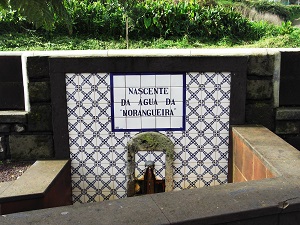
** Água da Grutinha I
Hot spring with a temperature of 42.5°C, highly acidified, located in the Garden of Quenturas.
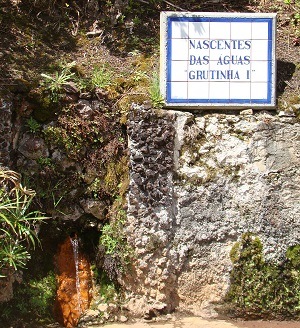
** Água da Grutinha II
Hot spring with a temperature of 42.7 °C, highly acidified, located in the Garden of Quenturas.
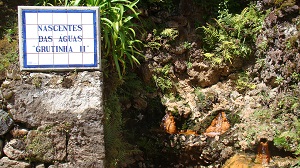
** Water of Quenturas I and Quenturas III
Quenturas I - Thermal spring located on Avenida Pereira Atayde, with a temperature of 59.5°C, highly acidified.
Quenturas III - Located on Avenida Pereira Atayde, this hot spring has a temperature of 59.3°C, highly acidified.
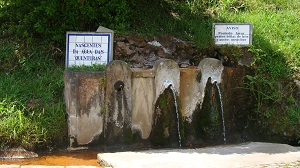
Other spots:
** Banhos dos Cabaços (Poça da D. Beja)
The water emerges at a temperature of 39 °C and is acidified. The spring lies in an excavated cavity at the bottom of the slope on the right bank of the Ribeira do Lameiro, on the western part of the parish of Furnas. In the past, people used the high temperature water for bathing.
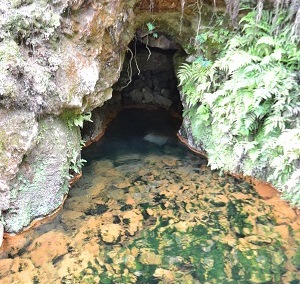
** Nascente Terra Nostra I
Spring of 41.3°C and acidified.
** Nascente Terra Nostra II
Spring of 40.4 ° C and acidified.
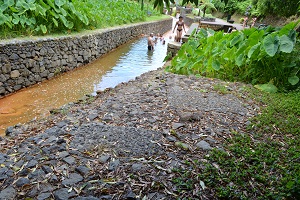
** Nascente do Sanguinhal
Acidified thermal spring with a temperature of 37.5°C, located in Caminho do Sanguinhal.
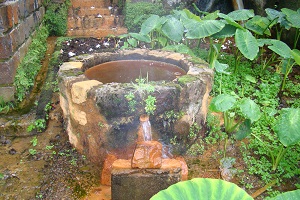
** Água do Alcântara
Mineral spring with a temperature of 17.9°C and acidified.
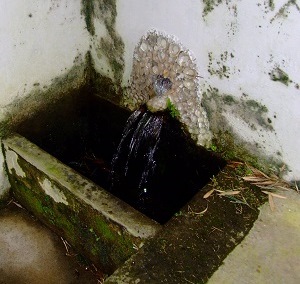
** Água Dr. Bruno
Spring with a temperature of 20.4 °C, located on Rua Margarida Eugenia Moniz Oliveira. Known as "Água Peideira", it is effective against flatulence, and indicated to stop bleeding.
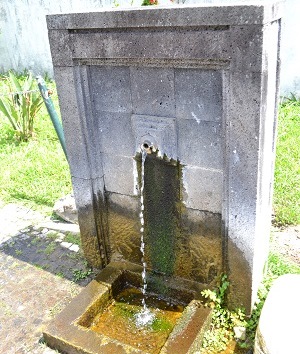
** Água Glória Patri
The spring emerges at a temperature of 17.5°C, with neutral pH. It constitutes the private property of the Company Promineral, from Renova Group, who sells the water. The source lies in the company’s property and emerges 3.6km from the farm.
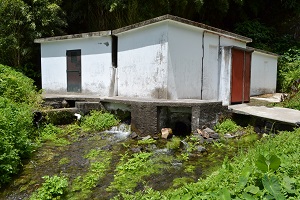
** Caldeira da Lagoa das Furnas
Large geyser located on the bank of the lake, at the bottom slope of Pico do Ferro and named "Caldeira da Lagoa das Furnas". Its temperature is about 98.5°C and acidified.
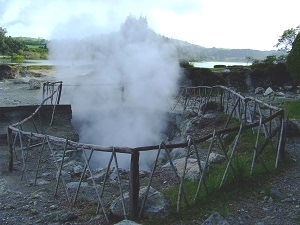
< Previous page